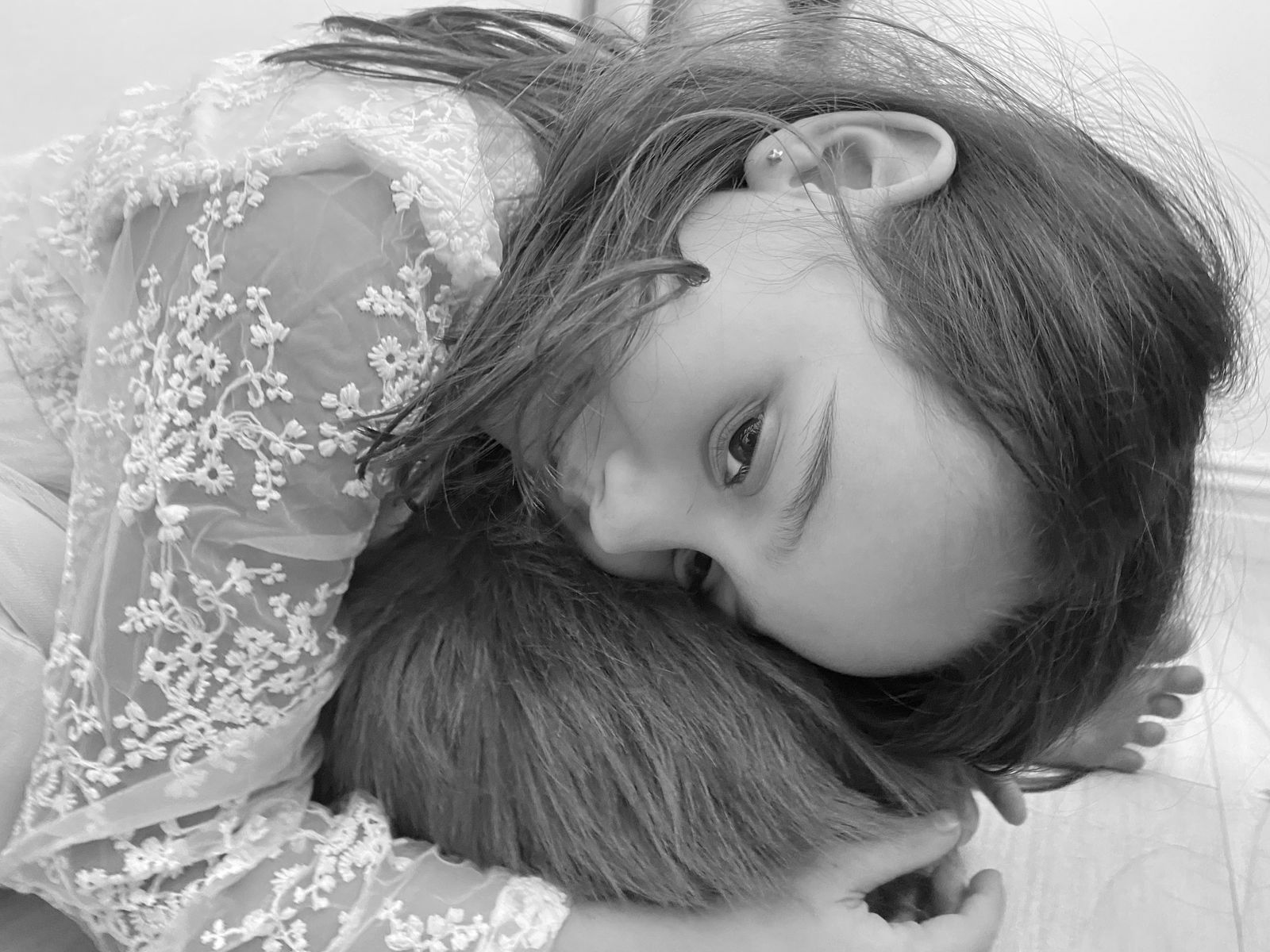1. Pass the Breath Ball : Toss-and-breathe regulation
Sit or stand in a circle. When you catch the ball, take a deep breath in and hold. When you throw it, exhale slowly. Add a whisper or word on the exhale like “calm,” “strong,” or “peace.”
Why: Builds rhythm, breath control, and social engagement through turn-taking.
2. Rolling Senses: Soft or Strong : Sensory feedback and body awareness
Gently or firmly roll the ball on the child’s back, arms, or legs. Ask, “Was that soft or strong?” Let the child roll it on you. Try blindfolded versions to tune in to touch.
Why: Encourages sensory processing, descriptive language, and empathy.
3. The Power Throw : Safe release of big emotions
Throw Breath as hard as you can into the Calm Cube or a couch. Name the emotion you’re releasing, like “I feel ANGRY” or “I feel WORRIED.” Repeat until the body feels softer.
Why: Allows physical expression of emotion in a safe, directed way.
4. Rescue Breath: Obstacle Course Adventure : Imaginative regulation mission
Hide Breath inside the Calm Cube. Build a simple obstacle course using pillows, tunnels, or steps. Invite the child on a mission: “Rescue Breath.” Once found, pause to breathe together.
Why: Blends physical play, imagination, and co-regulation.
5. Breathing Buddy Rest Game : Breath awareness and rest
Lie on your back. Place Breath on your belly and watch him rise and fall with your breath. Count five to ten breaths slowly. Try this after big emotions or before bed.
Why: Supports interoception, grounding, and calm transitions.
6. Emotion Rhythms Ball Game : Movement-based emotional literacy
Match the way you throw or roll the ball to an emotion.
Calm = gentle toss.
Angry = strong throw.
Sad = slow roll.
Excited = bouncy throw.
Why: Links physical movement with emotional states, promoting awareness and vocabulary.
7. Breath’s Big Hug : Soothing stillness and deep pressure
Sit cross-legged and hug Breath tightly to your chest. Take three slow, deep breaths. Notice how your body softens.
Why: Offers deep pressure input to calm the nervous system.
8. Roll Adventure : Gentle tummy time and imagination
Lie on your tummy and use your hands to roll Breath across the floor. Add a story such as “He’s rolling through the forest.” Count how many rolls it takes to reach a goal.
Why: Strengthens core muscles, imagination, and bilateral coordination.
9. Breath Hide & Seek : Mindful movement and curiosity
Take turns hiding Breath. When found, pause to take one slow, full breath together. Add whispered clues or tiptoe around to increase fun.
Why: Encourages attunement, patience, and shared focus.
10. 5-4-3-2-1 with Breath / Grounding game for sensory awareness
Sit quietly with Breath in your lap. Close your eyes. Take a deep breath in, pause, and slowly breathe out. Name five things you can hear, four things you can touch, three things you can see, two things you can smell, and one thing you can taste.
Why: A classic grounding technique adapted for sensory regulation and mindfulness.
11. Balance and Focus Challenge : Resilience through movement
Place Breath on your head or lap. Try to hop like a frog, tiptoe, or spin slowly across the room. If Breath falls, laugh, reset, and try again.
Why: Builds balance, proprioception, and flexible thinking.
12. Night-Time Reflection: Pass Breath : End-of-day reflection and connection
Sit together and gently pass Breath around. When holding Breath, take a deep breath and answer: What made you happy today? What made you feel sad? What made you feel safe? What did you do for someone else? What are you thankful for?
Why: Builds emotional connection, gratitude, and narrative memory.
13. Breath’s Journey Map : Draw your feelings through the day
On a large sheet of paper, draw a winding path. Place stickers or draw Breath along the path to show how you felt during the day – calm moments, stormy feelings, times you found your breath. Talk through the journey together.
Why: Helps children visualize emotional regulation as a daily adventure.
14. Ball Buddies Mirror Game : Co-regulation and attunement through mimicry
Sit facing each other with a ball. One person is the leader and moves the ball slowly in patterns – side to side, in circles, up and down. The other person mirrors the movements. Then switch roles.
Why: Builds attunement, social-emotional reciprocity, and calm co-regulation.
15. Weather Check-In with Breath : Body-weather emotional awareness
Hold Breath in your hands or on your lap. Close your eyes and take a slow, deep breath. Ask, “What’s the weather like inside you right now?” It might feel sunny, stormy, cloudy, windy, foggy, or still. Invite the child to describe or move like their inner weather. Then pause to breathe together, noticing if anything shifts.Remind them: “You are the sky. The weather changes, but the sky stays.” Emotions come and go, just like weather. And that’s okay.
Why: Helps children name and express feelings using playful, relatable imagery while building emotional literacy, body awareness, and self-acceptance.


